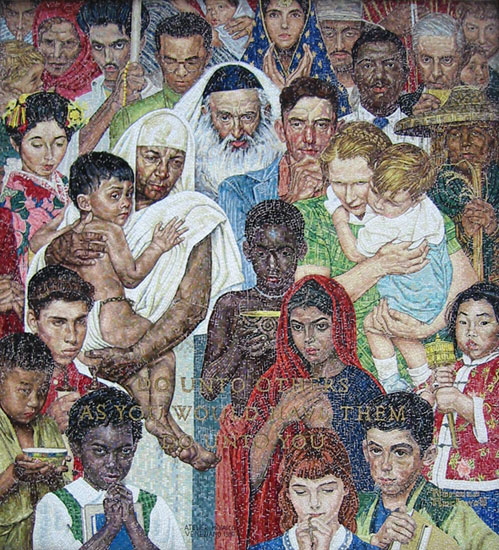From Jan. 24 to Feb. 5 in the loggia level of the library, the Multifaith Campus Ministry office will present a display called “Quilting the Golden Rule.” The display will allow students to be able to explore other religions around the world.
This display was created over a span of five years by Janet Bear McTavish, who was inspired to create the quilts in a vivid dream. She was seeking a way to bring people together in response to the terrorist attacks of 9/11.
It is a series of 16 quilts representing various traditions and religions around the world, ranging from ancient religions to modern day traditions and humanism.
It is centered around the golden rule which can be found in 6 major religions and traditions. It is the teaching that we should treat others the way we would like to be treated.
 This is the third year Sinclair will be displaying the quilts, which are normally housed at the Dayton International Peace Museum. McTavish donated the quilts to the museum in 2012. Kathy Rowell, Professor of Sociology, brought the exhibit to Sinclair.
This is the third year Sinclair will be displaying the quilts, which are normally housed at the Dayton International Peace Museum. McTavish donated the quilts to the museum in 2012. Kathy Rowell, Professor of Sociology, brought the exhibit to Sinclair.
Larry Lindstrom is the Multifaith Chaplain at Sinclair Community College.
“Each of those encourages people to take care of each other,” said Lindstrom speaking about the quilts. “Even though we are all different, and there might be places that we disagree with each other, one thing we can all agree on is that we all ought to treat each other with respect.”
On Jan. 31 at 12:30 p.m. there will be a presentation on Islam, and how we can move past the stereotypes that surround the religion and its followers. There will be student and faculty representatives that are Islamic, speaking about how the religion has enriched their lives.
“It is a place where people can explore their differences but also rejoice in the common ground” Lindstrom said.
To wrap up the quilt display there will be a faith fair on Feb. 5 from 11 a.m. to 1 p.m. with representatives from different religions.
This will be an opportunity for faculty and students to not only see the quilts, but mingle with the representatives and further educate themselves on each religion that is depicted on the quilts. There will be representatives from mosques, temples and churches available to speak with.
Lindstrom went on to explain the significance of the event:
“It has been an important part of the campus’ outreach to the whole community, an invitation for people to look beyond their own traditions and realize that we have a lot we can learn from each other.”
Kali Macklin
Reporter


